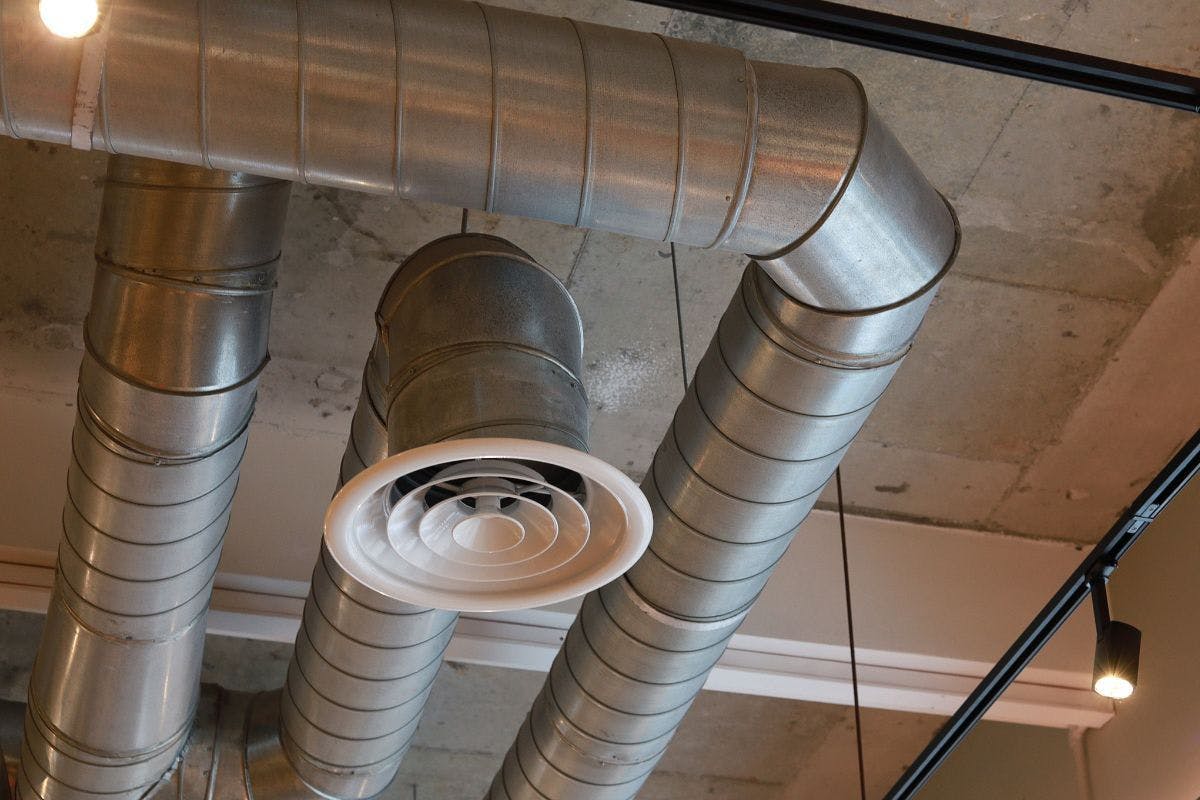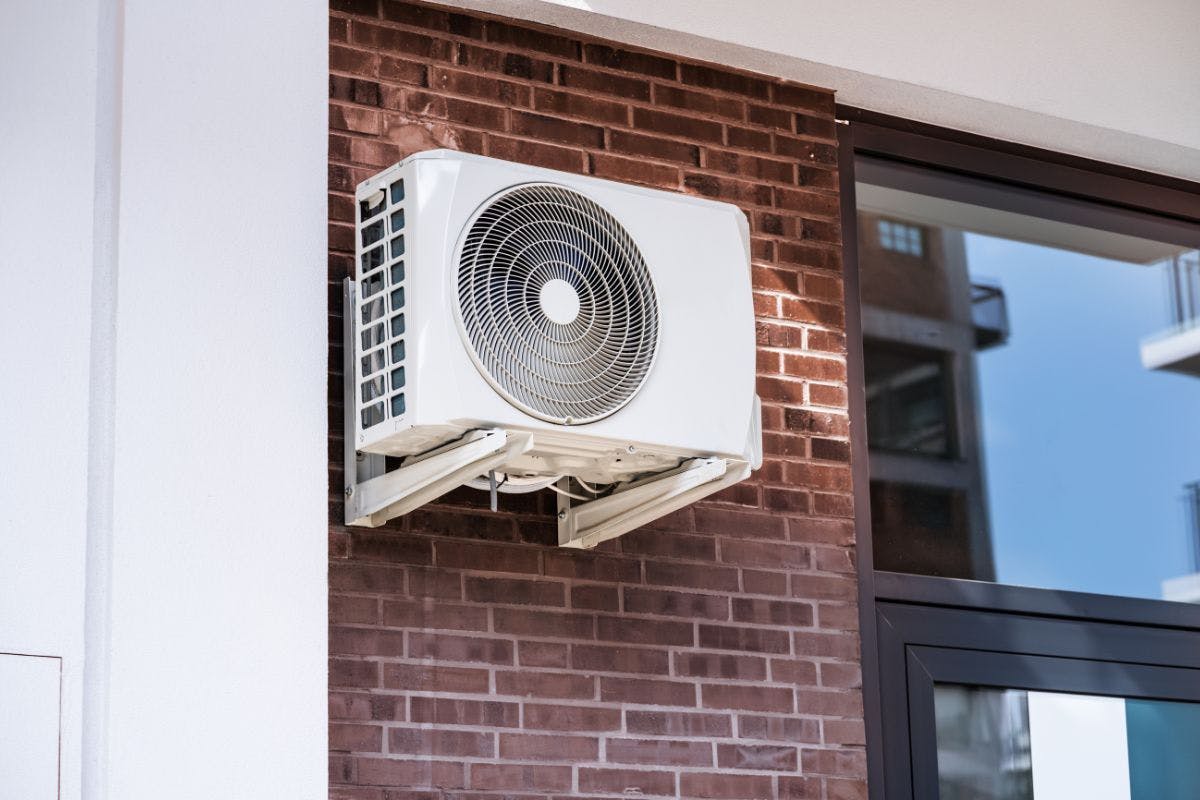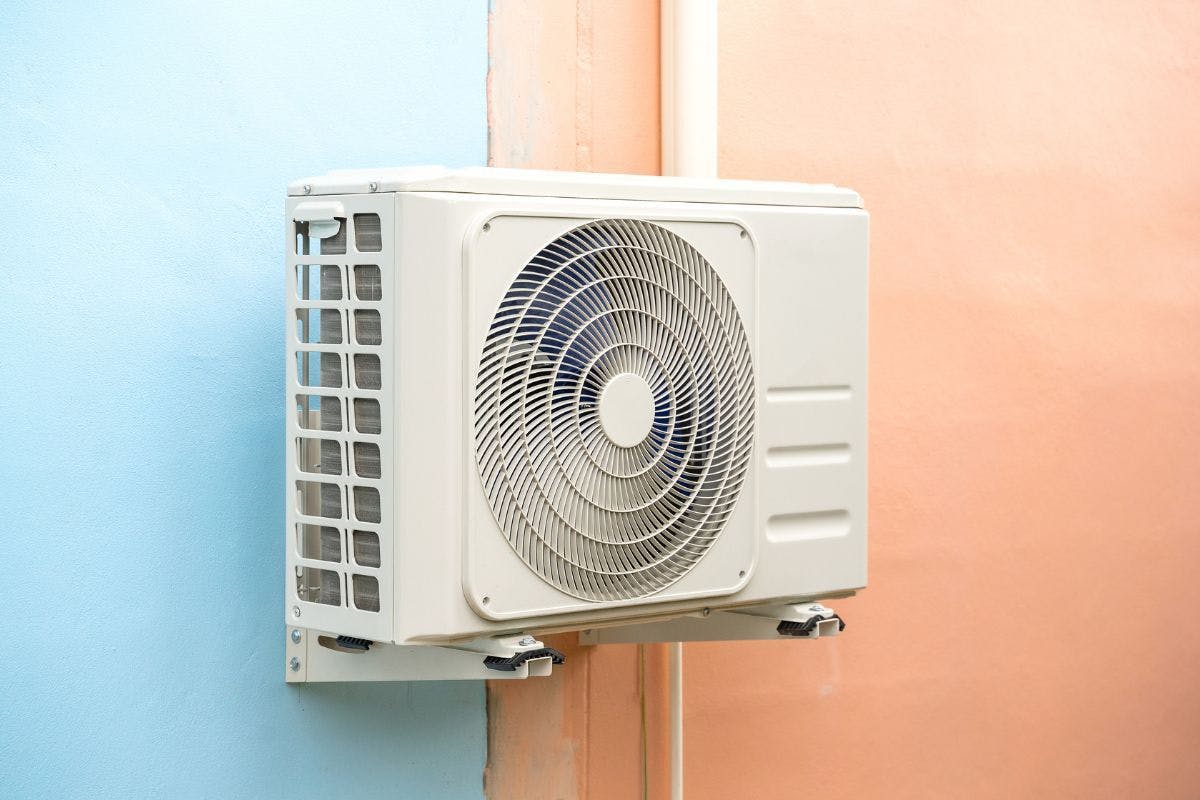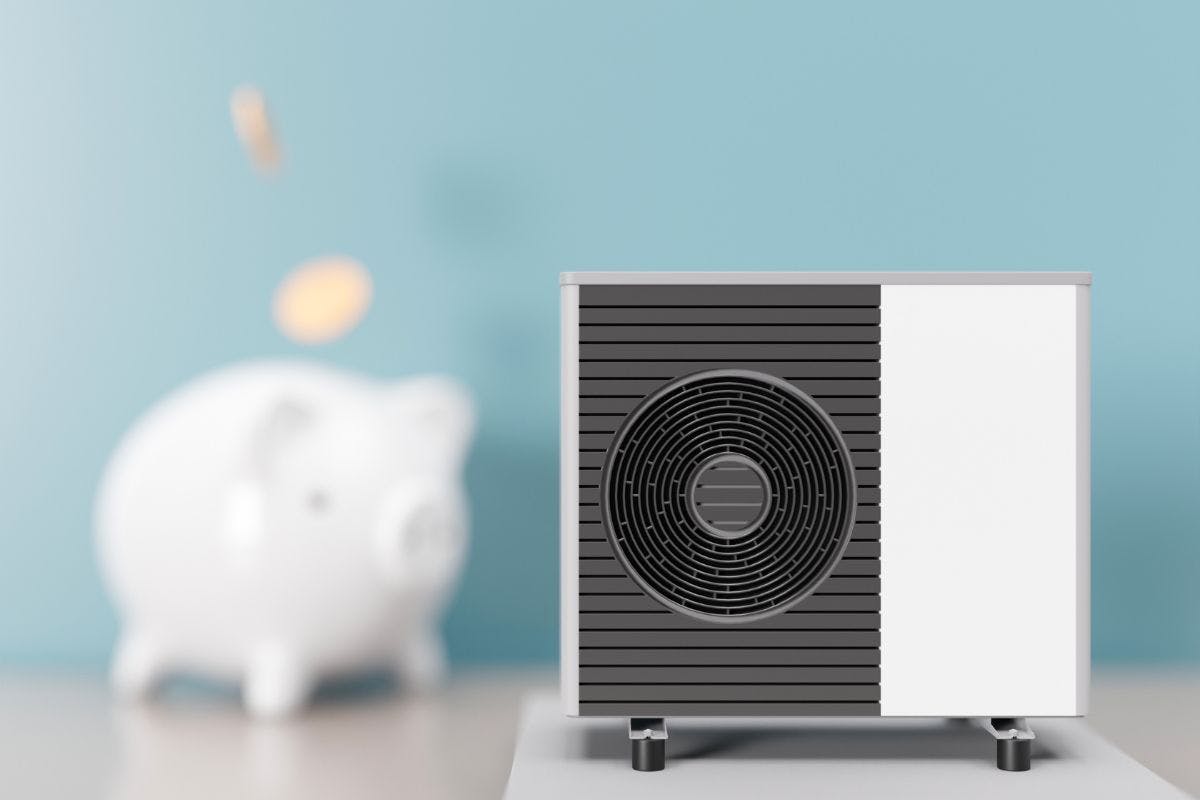Duct Sealing Can Save You Money and Energy
Actualizado

Autor
Andrew Giermak
Solar and Electrification Writer and Editor

Editor
Andrew Blok
Writer and Editor

Most of the air we breathe is the air in our home. Also, about 50% of an average US home’s energy usage is for heating and cooling.
So, the air passing through your home’s HVAC ducts every day can have a significant impact on your family’s health and well-being. And, if you’re losing some of that heating and cooling due to worn, leaky, unsealed ductwork, you’re wasting energy and spending more money.
Inspecting your HVAC system’s ductwork is probably not on your list of household chores, but proper duct sealing can be important to health, comfort, and how much you spend for heating and cooling.
See how much you can save with home energy changes
What Is Duct Sealing?
Duct sealing is the process of properly sealing the gaps, cracks, and connecting points throughout your home’s ductwork. Sealing the ducts and connections in your home’s HVAC system may require professional help or be fine as a DIY task depending on the extent of the fixes and the DIYers ability and experience.
The leakier the duct, the less heated or cooled air that gets to its intended destination. Just like a leaky pipe will deliver less water, a leaky duct will deliver less conditioned air. According to Energy Star, up to 30% of a home’s conditioned air can be lost because of poor sealing. So, proper duct sealing can make a difference for you in energy bills and energy efficiency. You might also notice more even heating and cooling throughout your home and better indoor air quality.
Benefits of Duct Sealing
A duct system that’s sealed and maintained well through the life of the system can give you lower energy bills and better comfort.
Lower energy bills
You want all of the heating and cooling you’re paying for, and you’re paying for the air being lost through broken or leaky ducts, too. If your HVAC is more efficient, your system gets your home to your preferred thermostat setting quicker using less energy.
Comfort
Duct sealing (and improved home insulation) can solve problems of uneven heating or cooling throughout your house.
Air quality and health
Along with heating and cooling, your HVAC system is designed to keep your interior air clean and at a set humidity level. Ducts with gaps can allow moisture and air that’s more likely to contain dust, pollen, odors, and mold as it hasn’t gone through the filtration process an HVAC system is designed to do.
Once you factor in sleeping, almost all of us spend most of our time in our home, breathing the air in our home. Poor air quality can lead to allergies and illnesses such as asthma.
Safety
Some usual appliances or systems, such as water heaters or furnaces, release gas fumes which are supposed to vent to the outside. A faulty ductwork system can have “backdrafting” of fumes being brought back into the home rather than being exhausted out.
Better for the environment
If your heating and cooling system needs less energy, it's using less fossil fuel either from the grid or from your furnace. Or, if you have home solar panels, it’s keeping your energy usage at or closer to 100% renewable solar-generated electricity.
See how much you can save with home energy changes
How to Seal Ducts
Methods and material to use for duct sealing depend on the extent of the sealing needed, how accessible the ductwork is, and if the project requires professional work.
Duct sealing or foil tape
Using duct sealing tape or foil tape is the easiest way to fix easily-accessible and small cracks or gaps. Despite the name, you should not use duct tape to repair ductwork. Duct tape is a serious fire hazard and not smoke or heat resistant. You should use duct sealing or foil tape that’s UL rated.
First, clean and dry the area in need of repair. Then, tape the areas to seal them. The main plus here is it’s easy, inexpensive, and can be a DIY job. Duct sealing tape has a shorter lifespan than other methods and won’t work for larger or more extensive repairs.
Mastic sealant
Mastic sealant looks similar to caulk. It is typically brushed onto and over ductwork. It can be used for a more thorough and efficient seal of leaks. Using sealant and fiberglass mesh tape together is recommended for larger gaps ⅛-inch or larger.
Mastic sealant is very durable and designed to last 15-30 years. DIYers with the right experience may take this on and be fine. Some homeowners may be better off hiring a contractor, especially if the job is in hard-to-reach areas or more extensive.
Injected aerosol sealing
When you want the most thorough and complete solution or have repairs that you can’t see or get to (for example, in ductwork behind drywall) professionally injected sealing is what you’re looking at.
A professional, with the right technology, tools, and safety measures, will seal your home’s ducts from the inside with an aerosol sealant.
First, the technician blocks all the vents and registers in the HVAC system. Next, the technician sends the sealant through the inside of the ducts so it seals every unwanted opening. The aerosol sealant has a lifespan of about 30-40 years, likely longer than the HVAC system’s.
When Should You Hire a Professional?
Some fixes to ductwork can be at the DIY level, especially if you have some experience. But, bringing in a professional can actually save you money, time, and stress. You might avoid some health hazards, too.
If the damaged ductwork is difficult or dangerous to get to, it’s best, and perhaps more cost-effective in the end, to have someone with the experience and resources do the job. If there are any other safety concerns, such as possibly working in an area with mold, hiring a pro makes more sense.
You might think there’s a problem with a damaged, worn, or leaky duct, but can’t find the problem on your own. This is likely a time to let a pro diagnosis and fix the issue. So is when you are facing an HVAC problem and want the best long-term solution.
If you’re looking at possible HVAC upgrades or solutions to save money and save energy, such as energy-efficient heat pumps, along with improving the comfort and air quality in your home, you can start by going to our free Energy Advisor tool.
See what home electrification can do for you:
Frequently Asked Questions
Is sealing your ducts worth it?
If you have old, damaged, cracked, or leaky ducts, it’s highly likely your HVAC system is running inefficiently, using too much energy, and costing you more than is necessary. You could also have comfort, health, air quality, and safety problems from ducts that need repairs.
What are the benefits of duct sealing?
Properly sealed ducts in your home’s HVAC system will give you more efficient energy usage with your heating and cooling, which will likely save you money. Cleaner air in your home is also important for health and comfort reasons.



